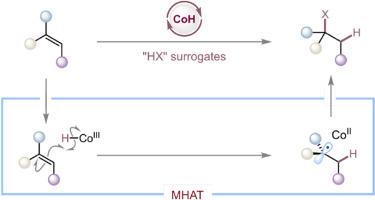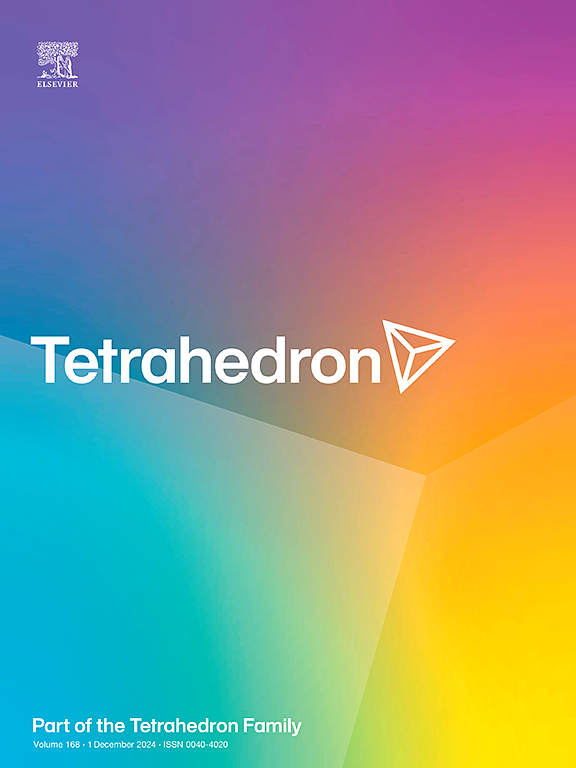通过氢原子转移钴催化烯烃氢卤化
IF 2.2
3区 化学
Q2 CHEMISTRY, ORGANIC
引用次数: 0
摘要
烯烃氢卤化是有机卤化物合成的一个基本转变,是有机合成、药物和材料科学的关键中间体。传统的卤化氢离子方法受到条件恶劣、官能团耐受性差和区域选择性问题的限制。最近,通过金属氢化物氢原子转移(MHAT)进行的钴催化的氢卤化反应已成为一种通用的、基于自由基的替代方法,具有温和的条件、广泛的官能团耐受性和可调的区域选择性。本文通过MHAT对钴催化烯烃氢卤化的发展进行了全面的综述,特别强调了方法上的创新、底物范围、机理原理和新兴应用。该领域的持续增长将扩大烯烃加氢功能化的合成实用性和可持续性,为在不同化学环境下形成可编程C-X键开辟新的途径。本文章由计算机程序翻译,如有差异,请以英文原文为准。

Cobalt-catalyzed alkene hydrohalogenation via hydrogen atom transfer
Alkene hydrohalogenation is a fundamental transformation for the synthesis of organohalides, key intermediates in organic synthesis, pharmaceuticals, and materials science. Traditional ionic methods with hydrogen halides are limited by harsh conditions, poor functional group tolerance, and regioselectivity issues. Recently, cobalt-catalyzed hydrohalogenation via metal-hydride hydrogen atom transfer (MHAT) has emerged as a versatile and radical-based alternative, enabling mild conditions, broad functional group tolerance, and tunable regioselectivity. This mini-review provides a comprehensive overview of the development in cobalt-catalyzed alkene hydrohalogenation via MHAT, with particular emphasis on methodological innovations, substrate scopes, mechanistic principles, and emerging applications. The continued growth of this field is poised to expand the synthetic utility and sustainability of alkene hydrofunctionalization, opening new avenues for programmable C–X bond formation across diverse chemical contexts.
求助全文
通过发布文献求助,成功后即可免费获取论文全文。
去求助
来源期刊

Tetrahedron
化学-有机化学
CiteScore
3.90
自引率
4.80%
发文量
439
审稿时长
34 days
期刊介绍:
Tetrahedron publishes full accounts of research having outstanding significance in the broad field of organic chemistry and its related disciplines, such as organic materials and bio-organic chemistry.
Regular papers in Tetrahedron are expected to represent detailed accounts of an original study having substantially greater scope and details than that found in a communication, as published in Tetrahedron Letters.
Tetrahedron also publishes thematic collections of papers as special issues and ''Reports'', commissioned in-depth reviews providing a comprehensive overview of a research area.
 求助内容:
求助内容: 应助结果提醒方式:
应助结果提醒方式:


